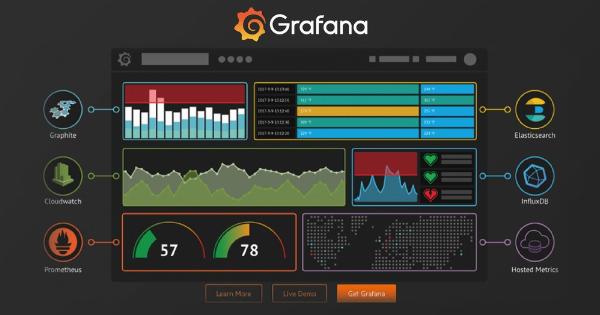Grafana Open Source: Best Practices for Efficient Data Dashboards

Strong 8k brings an ultra-HD IPTV experience to your living room and your pocket.
In the realm of data visualization and monitoring, Grafana has emerged as a powerful tool, providing a flexible and intuitive platform for creating insightful dashboards. As an open-source solution, Grafana has garnered significant attention for its robust features and community-driven support. Whether you're a seasoned developer or a novice exploring the world of data analytics, adopting best practices ensures you harness Grafana's full potential effectively.
Understanding Grafana Open Source
Grafana, an open-source analytics and monitoring platform, empowers users to visualize data from multiple sources in real-time through customizable dashboards. Designed with scalability in mind, it supports various data sources including popular databases like MySQL, PostgreSQL, and time-series databases such as Prometheus and InfluxDB. Its open-source nature not only fosters innovation but also encourages community collaboration, resulting in continuous improvements and a wealth of plugins and extensions.
Key Best Practices for Optimizing Grafana Dashboards
1. Define Clear Objectives: Begin by outlining your dashboard's purpose and intended audience. Define key metrics and visualizations that align with your monitoring goals, whether it's system performance, application health, or business KPIs.
2. Organize with Consistency: Maintain consistency in layout and design across your dashboards. Use consistent color schemes, fonts, and panel sizes to enhance readability and usability.
3. Optimize Query Performance: Efficient data retrieval is crucial for real-time monitoring. Utilize Grafana's query caching and optimize queries to minimize data processing times, ensuring swift updates on your dashboards.
4. Utilize Panels Effectively: Choose appropriate panel types (graphs, gauges, tables) based on data characteristics and visualization needs. Leverage features like annotations and thresholds to highlight critical events and trends.
5. Implement Templating: Grafana's templating feature allows dynamic dashboard generation based on variables. Use it to create reusable templates for different environments or to drill down into specific data segments effortlessly.
6. Employ Alerting Mechanisms: Set up alerts to notify stakeholders of anomalies or threshold breaches promptly. Configure alert rules within Grafana to trigger notifications via email, Slack, or other channels, ensuring timely response to critical issues.
7. Secure Your Deployment: Implement robust security measures to protect sensitive data and ensure authorized access. Utilize HTTPS, authentication plugins, and role-based access control (RBAC) to safeguard your Grafana instance.
8. Monitor and Maintain: Regularly monitor dashboard performance and user feedback. Optimize panels for load times, review query efficiency, and update dashboards as data sources or business requirements evolve.
Harnessing the Power of Grafana Open Source
Grafana's open-source ecosystem empowers organizations to build scalable, feature-rich dashboards tailored to their unique monitoring needs. By adhering to best practices in dashboard design, query optimization, and security, users can maximize the efficiency and effectiveness of their Grafana deployments. Whether for IT operations, DevOps, or business analytics, Grafana Open Source remains a versatile and indispensable tool for visualizing and interpreting data in real-time.
Conclusion
In conclusion, Grafana Open Source stands at the forefront of modern data visualization and monitoring solutions, offering unparalleled flexibility and scalability. By implementing best practices outlined above, organizations can create optimized dashboards that deliver actionable insights and drive informed decision-making. Embrace Grafana's open-source ethos and empower your team with powerful data visualization capabilities today.
Note: IndiBlogHub features both user-submitted and editorial content. We do not verify third-party contributions. Read our Disclaimer and Privacy Policyfor details.


